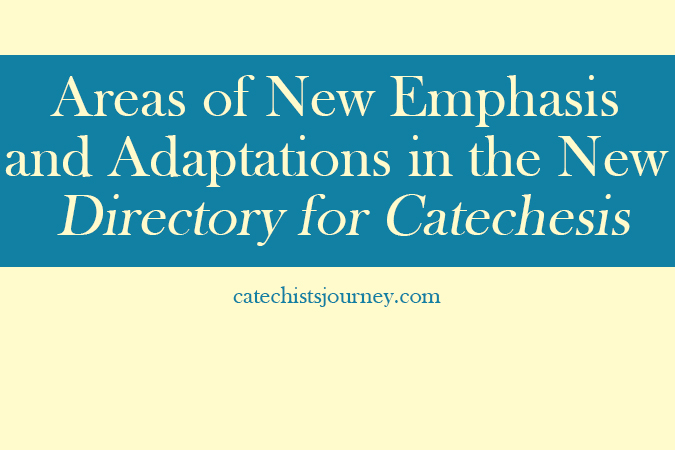
This is part four of a four-part series on the new Directory for Catechesis.
Previously, I reviewed the emphasis the new Directory for Catechesis places on the term kerygmatic catechesis and the process of evangelization. In this article, let’s look at some of the areas of added emphasis, adaptations, and changes in the new directory.
In the preface to the directory, the Pontifical Council for the New Evangelization indicates that this document has “room for improvement” and “makes no claim to completeness.” Particular Churches are encouraged to produce their own directory similar to the National Directory for Catechesis (2005) that was produced as a follow-up to the General Directory for Catechesis.
Which areas have received added emphasis?
Some areas that have been given a renewed or expanded area of emphasis include the following:
- Missionary activity as the first stage of evangelization
- The primacy of the kerygma in the process of evangelization
- The relationship between evangelization and catechesis
- The role of evangelization in the contemporary world
- Insights and opportunities for inculturation of the faith
- The formation of catechists
- Catechesis in light of contemporary cultural challenges
Which areas have been revised?
The General Directory for Catechesis (1997) identified six interrelated and complementary ways in which catechesis prepares students for Christian living. Conversion, like catechesis, is a life-long journey, and the tasks of catechesis are nothing less than the dimensions of a life lived with Jesus. However, the new Directory for Catechesis lists five tasks instead of six, and it is important to be aware of the differences.
The following table compares the tasks of catechesis provided in both the 1997 General Directory and the new Directory for Catechesis.
| General Directory for Catechesis (1997) | New Directory for Catechesis (2020) |
|---|---|
| Promoting Knowledge of the Faith | Leading to Knowledge of the Faith |
| Liturgical Education | Initiating into the Celebration of the Mystery |
| Moral Formation | Forming for Life in Christ |
| Teaching to Pray | Teaching Prayer |
| Education for Community Life | Introduction to Community Life |
| Missionary Initiation |
What happened to moral formation and missionary initiation? From a comprehensive reading of the text, it is clear that the entire process of evangelization and catechesis is undergirded by a spirit of missionary invigoration capable of “enlivening with boldness and creativity both the cultural and religious landscape and the person horizon of every human being.” (#40) Moral formation is now addressed within the goal of formation for life in Christ, with particular emphasis on formation in the Beatitudes.
The distinction between promoting knowledge of the faith and leading to knowledge of the faith may seem like a subtle shift, but it is a substantive one. “Promoting knowledge of the faith” indicates a more content-centered approach to knowledge of the faith. However, “leading to knowledge of the faith,” as used in the new directory, focuses on the gradual process of Christian “maturation of faith.” (#80) Relationship with Christ is at the heart of our journey as disciples, and catechists are to be formed as “witness[es] of faith and keeper[s] of the memory of God.” (#139)
What questions and insights do you have regarding some of the changes to the new Directory for Catechesis? How will these insights affect you in this ministry?





Be the first to comment